Refractory metal powders are a fascinating and essential part of modern materials science, playing a critical role in various high-tech industries. These materials are known for their exceptional resistance to heat and wear, making them invaluable in demanding applications. In this comprehensive guide, we’ll dive deep into the world of refractory metal powders, exploring their types, compositions, properties, applications, and much more.
Overview of Refractory Metal Powders
Refractory metal powders are derived from elements that have exceptionally high melting points and are resistant to wear, corrosion, and deformation. These metals include tungsten, molybdenum, tantalum, niobium, and rhenium. They are utilized in environments that require materials capable of withstanding extreme conditions, such as aerospace, nuclear reactors, and high-temperature furnaces.

Types of Refractory Metal Powders
To fully understand refractory metal powders, let’s take a closer look at some specific types and their unique properties:
| Metal | Description |
|---|---|
| Tungsten (W) | Known for the highest melting point and density, ideal for high-temperature applications. |
| Molybdenum (Mo) | Excellent thermal conductivity and low thermal expansion, used in electronics and lighting. |
| Tantalum (Ta) | Highly corrosion-resistant, used in medical devices and chemical processing equipment. |
| Niobium (Nb) | High ductility and superconductivity, used in superalloys and electronics. |
| Rhenium (Re) | High melting point and unique electrical properties, used in jet engines and electronics. |
| Zirconium (Zr) | Excellent corrosion resistance and strength, used in nuclear reactors and medical implants. |
| Hafnium (Hf) | High neutron absorption, used in nuclear reactors and aerospace components. |
| Vanadium (V) | Good strength and temperature resistance, used in superalloys and tools. |
| Chromium (Cr) | Excellent hardness and corrosion resistance, used in coatings and superalloys. |
| Titanium (Ti) | High strength-to-weight ratio, used in aerospace, medical, and industrial applications. |
Composition of Refractory Metal Powders
The composition of refractory metal powders is critical to their performance. These metals are often combined with other elements to enhance specific properties:
| Metal | Composition | Properties Enhanced |
|---|---|---|
| Tungsten | Pure or alloyed with Ni, Fe, Cu | Enhanced machinability and strength. |
| Molybdenum | Pure or alloyed with Ti, Zr, C | Improved creep resistance and strength. |
| Tantalum | Pure or alloyed with W, Hf | Enhanced corrosion resistance and strength. |
| Niobium | Pure or alloyed with Ti, Al | Improved superconductivity and strength. |
| Rhenium | Pure or alloyed with Mo, W | Enhanced thermal stability and strength. |
Characteristics of Refractory Metal Powders
Refractory metal powders exhibit unique characteristics that make them suitable for high-performance applications:
- High Melting Points: Essential for applications involving extreme heat.
- Exceptional Hardness: Provides durability and wear resistance.
- High Density: Contributes to strength and stability under stress.
- Corrosion Resistance: Ensures longevity in harsh environments.
- Good Thermal and Electrical Conductivity: Important for electronics and high-temperature applications.


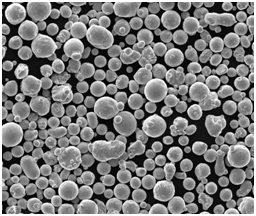
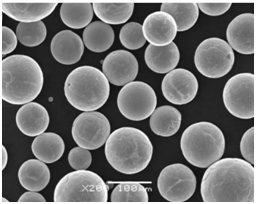
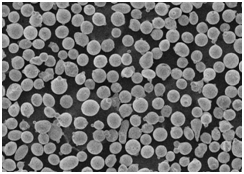
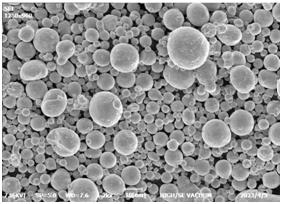
Applications of Refractory Metal Powders
Refractory metal powders are used across various industries due to their remarkable properties:
| Industry | Application |
|---|---|
| Aerospace | Jet engine components, rocket nozzles, heat shields. |
| Electronics | Semiconductor devices, filaments, contacts. |
| Medical | Surgical instruments, implants, dental devices. |
| Nuclear | Reactor components, radiation shielding, fuel cladding. |
| Chemical Processing | Corrosion-resistant equipment, catalysts, reaction vessels. |
| Industrial | Cutting tools, molds, dies, wear-resistant coatings. |
Specifications, Sizes, Grades, Standards
Understanding the specifications and standards for refractory metal powders is crucial for their application:
| Metal | Sizes (microns) | Grades | Standards |
|---|---|---|---|
| Tungsten | 1-100 | W1, W2, W3 | ASTM B777, ISO 4497 |
| Molybdenum | 1-50 | Mo1, Mo2, TZM | ASTM B386, ISO 5755 |
| Tantalum | 1-40 | Ta1, Ta2 | ASTM B708, ISO 13782 |
| Niobium | 1-60 | Nb1, Nb2, Nb3 | ASTM B393, ISO 13782 |
| Rhenium | 1-20 | Re1, Re2 | ASTM B708, ISO 13782 |
Suppliers and Pricing Details
Finding reliable suppliers and understanding pricing is essential for procurement:
| Supplier | Metal | Price (per kg) | Contact Information |
|---|---|---|---|
| Global Tungsten | Tungsten | $250 | [email protected] |
| Midwest Molybdenum | Molybdenum | $150 | [email protected] |
| Tantalum Supply | Tantalum | $300 | [email protected] |
| Niobium Sources | Niobium | $200 | [email protected] |
| Rhenium Rare | Rhenium | $400 | [email protected] |
Advantages and Limitations of Refractory Metal Powders
While refractory metal powders offer many benefits, they also come with some limitations:
| Advantages | Limitations |
|---|---|
| High temperature resistance | High cost |
| Excellent mechanical strength | Difficult to machine |
| Superior corrosion resistance | Limited availability |
| Good electrical and thermal conductivity | Heavy and dense |
| Long-lasting and durable | Potential health hazards during handling |
Comparison of Refractory Metal Powders
When choosing between different refractory metal powders, it’s important to compare their properties and suitability for specific applications:
| Metal | Melting Point (°C) | Density (g/cm³) | Corrosion Resistance | Thermal Conductivity (W/m·K) | Applications |
|---|---|---|---|---|---|
| Tungsten | 3422 | 19.25 | Excellent | 173 | Aerospace, electronics, lighting |
| Molybdenum | 2623 | 10.28 | Good | 138 | Electronics, glass melting, lighting |
| Tantalum | 3017 | 16.65 | Superior | 57 | Medical devices, chemical processing |
| Niobium | 2477 | 8.57 | Good | 54 | Superalloys, electronics, medical |
| Rhenium | 3186 | 21.02 | Excellent | 48 | Jet engines, electronics, chemical |
Detailed Analysis of Specific Refractory Metal Powders
Now, let’s delve deeper into the specifics of some key refractory metal powders, highlighting their unique properties, applications, and benefits.
Tungsten Powder
Tungsten powder is renowned for its incredibly high melting point and density. This makes it ideal for applications that require materials to withstand extreme temperatures and mechanical stress. Tungsten is commonly used in aerospace for jet engine components, in electronics for filaments, and in medical devices for radiation shielding.
Molybdenum Powder
Molybdenum powder is known for its excellent thermal conductivity and low thermal expansion. These properties make it suitable for applications in electronics, such as heat sinks and transistors, as well as in lighting and glass melting industries. Molybdenum’s ability to maintain strength at high temperatures is a key advantage.
Tantalum Powder
Tantalum powder stands out for its superior corrosion resistance. This makes it invaluable in chemical processing and medical applications. Tantalum is often used in surgical instruments, implants, and in equipment that handles highly corrosive substances. Its ability to resist corrosion ensures longevity and reliability.
Niobium Powder
Niobium powder is notable for its high ductility and superconductivity. This makes it an essential component in superalloys used in aerospace and electronics. Niobium’s superconducting properties are utilized in medical imaging devices and particle accelerators, where maintaining low temperatures and efficient performance is crucial.
Rhenium Powder
Rhenium powder is prized for its high melting point and unique electrical properties. It is used in high-temperature turbine engines and electronics that require materials capable of enduring extreme conditions. Rhenium’s exceptional thermal stability and strength make it a critical material in demanding environments.
Comparative Analysis: Tungsten vs. Molybdenum
When comparing tungsten to molybdenum, both metals offer high-temperature resistance, but tungsten’s higher melting point (3422°C vs. 2623°C) gives it an edge in ultra-high-temperature applications. However, molybdenum’s superior thermal conductivity and lower density make it a better choice for applications requiring efficient heat dissipation and lighter weight.
Comparative Analysis: Tantalum vs. Niobium
Tantalum and niobium both excel in corrosion resistance, but tantalum’s higher density (16.65 g/cm³ vs. 8.57 g/cm³) makes it more suitable for applications where weight is less of a concern, and maximum corrosion resistance is required. Niobium’s high ductility and superconductivity, however, make it the preferred choice for advanced electronics and aerospace applications.
Comparative Analysis: Rhenium vs. Tungsten
Rhenium and tungsten are both used in high-temperature applications, but rhenium’s unique electrical properties and higher price point make it ideal for specialized electronics and jet engines. Tungsten’s higher density and lower cost make it more practical for general high-temperature and high-strength applications.
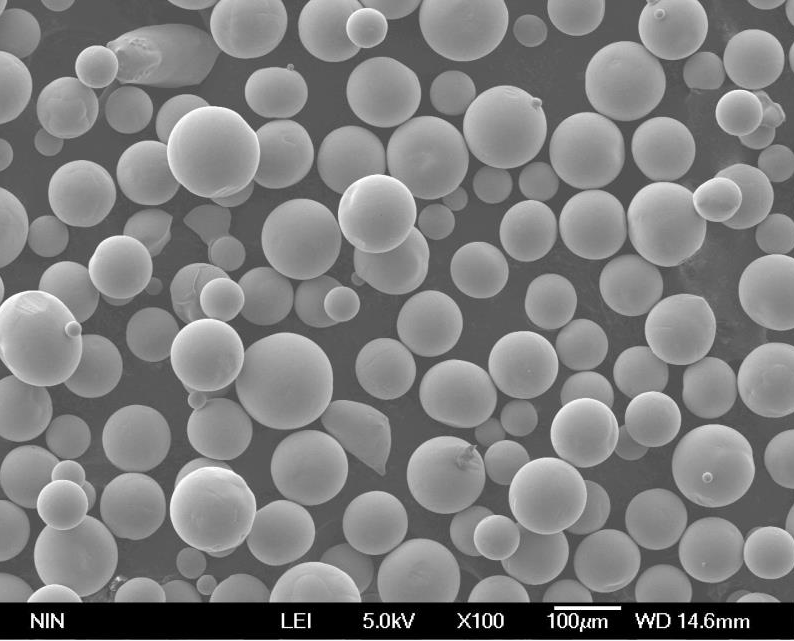
FAQ
| Question | Answer |
|---|---|
| What are refractory metal powders? | Refractory metal powders are materials with high melting points and exceptional resistance to heat, wear, and corrosion. |
| What are some common applications of refractory metal powders? | They are used in aerospace, electronics, medical devices, nuclear reactors, and chemical processing equipment. |
| How are refractory metal powders produced? | They are typically produced through processes such as mechanical alloying, chemical vapor deposition, and reduction of metal oxides. |
| What are the key properties of tungsten powder? | Tungsten powder is known for its high melting point, density, and strength, making it ideal for high-temperature applications. |
| Why is molybdenum powder used in electronics? | Molybdenum powder has excellent thermal conductivity and low thermal expansion, making it suitable for heat sinks and electronic components. |
| What makes tantalum powder corrosion-resistant? | Tantalum powder has a protective oxide layer that resists corrosion, even in harsh chemical environments. |
| How is niobium powder used in aerospace applications? | Niobium powder is used in superalloys for jet engines and other high-performance aerospace components due to its high strength and ductility. |
| What are the benefits of using rhenium powder in electronics? | Rhenium powder offers unique electrical properties and high thermal stability, making it ideal for high-performance electronic components. |
| Are there health risks associated with handling refractory metal powders? | Yes, some refractory metal powders can pose health risks if inhaled or ingested. Proper safety measures should be taken during handling and processing. |
| Where can I buy refractory metal powders? | Refractory metal powders can be purchased from specialized suppliers like Global Tungsten, Midwest Molybdenum, Tantalum Supply, Niobium Sources, and Rhenium Rare. |
Conclusion
Selecting the appropriate refractory metal powder depends on the specific requirements of your application. Consider factors such as melting point, thermal conductivity, corrosion resistance, density, and cost. Understanding these properties will help you make an informed decision and ensure the success of your project.

